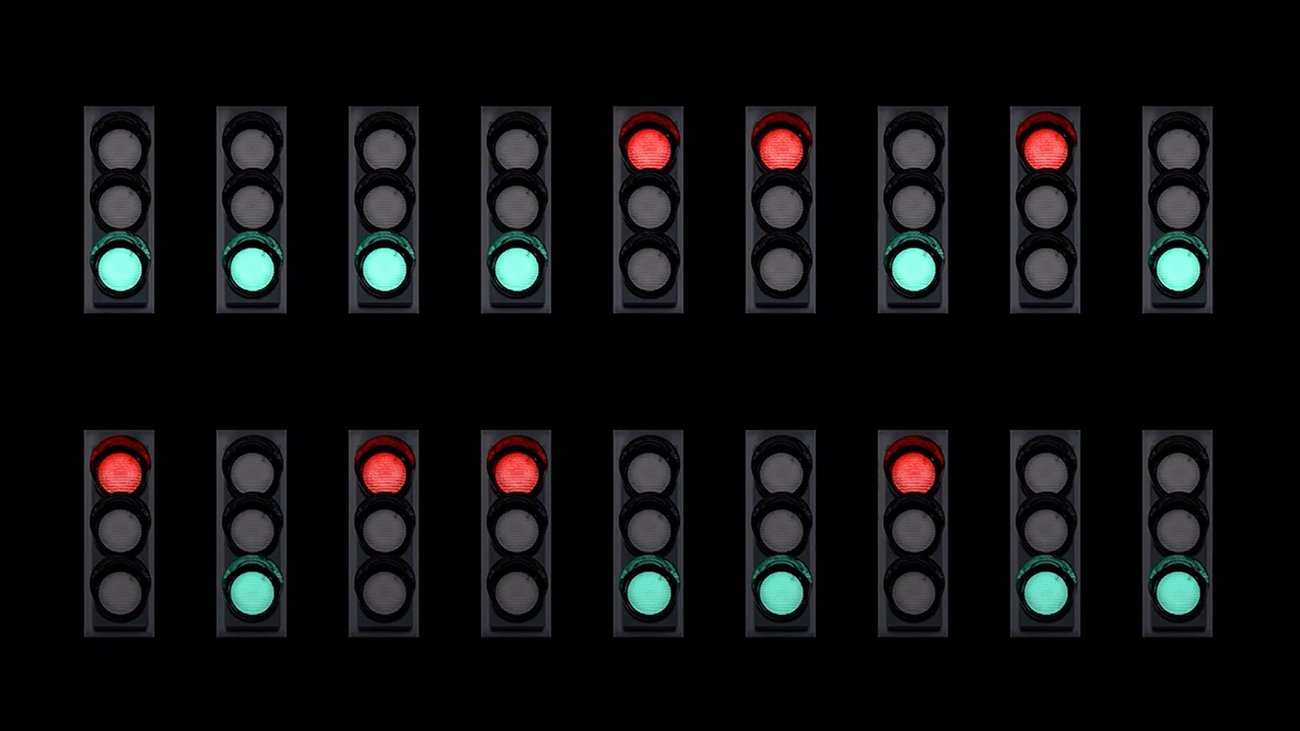At the beginning of 2020, a specialized team within Google Research was tasked with exploring innovative research projects aimed at accelerating climate mitigation efforts. The team delved into a variety of ambitious ideas, ranging from cultivated meat to advancements in energy and air pollution control. Dotan Emanuel, a software engineer on the team, recalls the brainstorming phase vividly.
One evening, while discussing these expansive ideas with his family over dinner, Dotan’s wife, Osnat, brought up a common frustration that many of us experience daily. "Why don’t you do something about traffic lights? We stand at them for no good reason," she remarked. This simple yet profound question set the stage for a groundbreaking project.
Road transportation is a significant contributor to both global and urban greenhouse gas emissions. Particularly problematic are city intersections, where pollution can be as much as 29 times higher than on open roads. Approximately half of these emissions stem from vehicles accelerating after stopping at traffic lights. Considering the millions of traffic lights worldwide, the scale of the problem was enormous. However, this also meant that the potential for impact, if addressed, was equally vast.
Initially skeptical, Dotan thought there was little they could do about traffic lights. "My initial thought was that we can’t do anything about traffic lights," Dotan says. "But when it comes to research, the most fascinating challenges lie in the unknown."
Intrigued by the challenge, Dotan and his team began investigating the intricacies of traffic engineering. They discovered that while some degree of stop-and-go traffic is unavoidable, a significant portion could be mitigated through optimized traffic light timing. Traditionally, cities have had to install costly hardware or conduct time-consuming manual vehicle counts to gather the necessary data for optimization. These methods often fall short of providing comprehensive information on key parameters.
"We quickly understood we have a strong advantage that cities could benefit from — over a decade of Google Maps driving trends from across the globe," Dotan explains. Leveraging this vast repository of data, the team formulated a project proposal within a few weeks.
The proposal led to the creation of Project Green Light, an initiative that employs artificial intelligence (AI) to provide recommendations for optimizing existing traffic lights. The goal is to reduce stop-and-go emissions significantly. After evaluating numerous other innovative ideas, Project Green Light was selected for its simplicity, scalability, and potential for a substantial positive impact.
Understanding Project Green Light
Project Green Light aims to streamline traffic flow and reduce emissions by using AI to optimize traffic light timings. This optimization involves adjusting the intervals at which traffic lights change, minimizing unnecessary stops and starts. The AI algorithms analyze vast amounts of data collected from Google Maps, including driving patterns, traffic density, and historical trends. This data-driven approach allows cities to implement changes without the need for expensive new hardware or labor-intensive manual data collection.
The Environmental Impact
According to studies, urban traffic congestion not only wastes time but also contributes significantly to air pollution. Vehicles idling at intersections release pollutants such as carbon dioxide, nitrogen oxides, and particulate matter. By optimizing traffic light timing, Project Green Light aims to reduce the duration vehicles spend idling, thereby cutting down on these harmful emissions. This has the potential to improve air quality in urban areas, making cities healthier places to live.
Scalability and Implementation
One of the standout features of Project Green Light is its scalability. Because the project relies on data already available through Google Maps, it can be implemented in cities worldwide without the need for extensive new infrastructure. City engineers can receive AI-generated recommendations and make adjustments to traffic light timings accordingly. This makes the project not only cost-effective but also easy to deploy across various urban settings.
Technical Jargon Explained
For those unfamiliar with some of the technical terms:
- Artificial Intelligence (AI): A branch of computer science that aims to create systems capable of performing tasks that would normally require human intelligence. In this case, AI is used to analyze traffic patterns and make optimization recommendations.
- Traffic Light Timing: The intervals at which traffic lights change from red to green and vice versa. Optimizing this timing can reduce the amount of time vehicles spend idling at intersections.
- Stop-and-Go Emissions: The pollutants released when vehicles repeatedly stop and start, often at traffic lights. These emissions are particularly high at intersections compared to open roads.
Reactions and Reviews
The initial reactions to Project Green Light have been overwhelmingly positive. City planners and environmentalists alike have praised the initiative for its innovative approach to a long-standing problem. "This project has the potential to transform urban traffic management," says Dr. Emily Thompson, an urban planner. "By leveraging existing data, we can make our cities more efficient and environmentally friendly."
Tech reviewers have also lauded the project for its practical application of AI. "Project Green Light is a perfect example of how technology can be used to solve real-world problems," notes tech analyst Michael Rivera. "It’s not just about making our lives more convenient; it’s about making a meaningful impact on the environment."
Future Prospects
Looking ahead, the team behind Project Green Light envisions expanding the initiative to incorporate more sophisticated AI models and additional data sources. This could include real-time data from connected vehicles and smart city infrastructure. The goal is to create a dynamic traffic management system that can adapt to changing conditions in real time, further reducing emissions and improving traffic flow.
Conclusion
Project Green Light represents a significant step forward in the quest to reduce urban emissions and improve traffic management. By utilizing AI and existing data from Google Maps, the initiative offers a scalable, cost-effective solution to a pervasive problem. As cities around the world grapple with the challenges of traffic congestion and air pollution, innovative projects like this one provide a glimmer of hope for a more sustainable future.
For those interested in learning more about Project Green Light, additional information can be found on the Google Research website. As the project continues to evolve, it stands as a testament to the power of technology and innovative thinking in addressing some of the most pressing issues of our time.
For more Information, Refer to this article.




















![The Apex Legends Digital Issue Is Now Live! Apex Legends - Change Audio Language Without Changing Text [Guide]](https://www.hawkdive.com/media/5-Basic-Tips-To-Get-Better-On-Apex-Legends-1-218x150.jpg)







